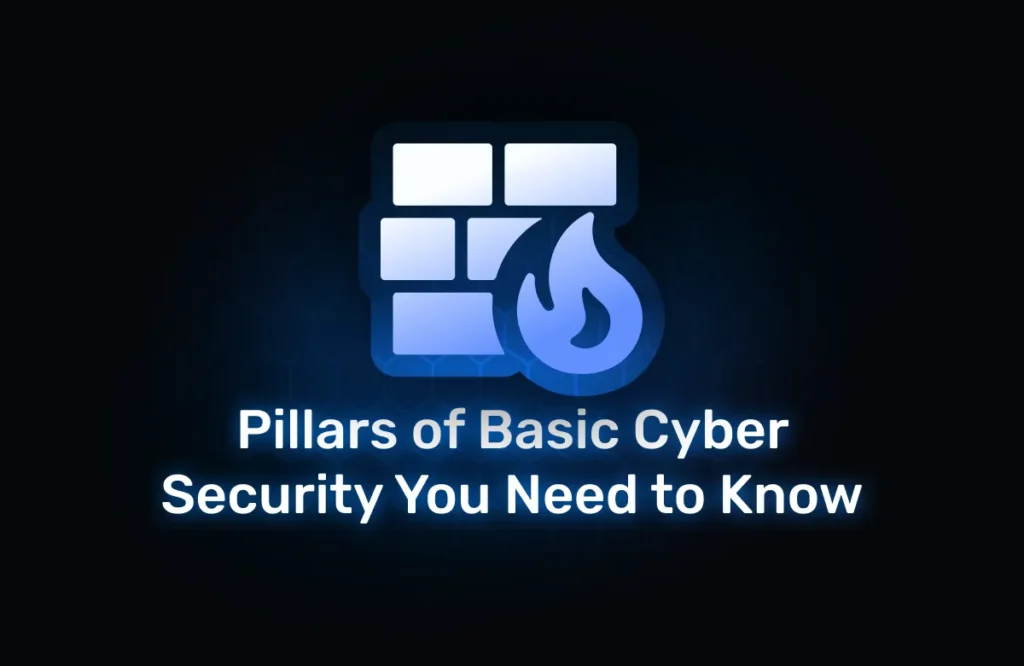Table of Contents
Let’s talk about basic cyber security. In today’s hyper-connected world, where we live so much of our lives online – from banking and shopping to socializing and working – understanding the fundamentals of digital safety isn’t just for tech gurus; it’s essential for everyone. Think about it: how much of your personal information resides online right now? Scary, right? Failing to grasp basic cyber security principles can leave you vulnerable to a whole host of threats, from identity theft to financial loss. But don’t worry, securing your digital life doesn’t have to be overly complex. Here at Netgaurd, we believe everyone deserves to feel safe online, and that starts with understanding the basics.
This guide will walk you through the core concepts of basic cyber security, offering practical steps you can implement immediately to significantly boost your online protection. We’ll break down complex ideas into simple, actionable advice. Ready to take control of your digital safety? Let’s dive in!
Why Does Basic Cyber Security Matter So Much Today?
You might be wondering, “Is basic cyber security really that important for me?” The short answer is: absolutely, yes! The digital landscape is constantly evolving, and unfortunately, so are the threats. Cybercriminals are becoming increasingly sophisticated, targeting individuals just as often as large corporations. Here’s why prioritizing basic cyber security is non-negotiable:
- Rising Threat Levels: Malware, ransomware, phishing scams, identity theft – these aren’t just buzzwords; they are real dangers affecting millions daily. Basic security practices are your first line of defense.
- Financial Risks: A security breach can lead to direct financial loss through stolen bank details or ransomware demands. The cost of recovery can be substantial.
- Personal Information Exposure: Your data is valuable. Hackers can steal personal identifiers, photos, private messages, and sensitive documents, leading to identity theft or reputational damage.
- Interconnected Devices (IoT): From smart TVs to thermostats, more devices are connected to the internet than ever before. Each connection point is a potential vulnerability if not secured, making basic cyber security crucial across all your gadgets.
- Work-From-Home Reality: With remote work becoming common, securing home networks and personal devices is vital to protect both personal and company data.
Ignoring basic cyber security is like leaving your front door unlocked in a busy city. It’s an open invitation for trouble. Implementing even the simplest measures can dramatically reduce your risk.

The Core Pillars of Basic Cyber Security You Need to Know
Okay, so we know it’s important. But what exactly constitutes basic cyber security? It boils down to a few fundamental practices and areas of awareness. Let’s break them down:
1. Strong Passwords & Multi-Factor Authentication (MFA)
Passwords are the keys to your digital kingdom. Weak, reused, or easily guessable passwords are a primary target for attackers. Here’s how to fortify this crucial area:
- Complexity is Key: Use a mix of upper and lowercase letters, numbers, and symbols. Aim for at least 12-15 characters. Avoid common words, names, or sequential numbers.
- Uniqueness Matters: Never reuse passwords across different accounts. If one account is compromised, attackers won’t gain access to others.
- Password Managers: Remembering dozens of complex, unique passwords is hard! Use a reputable password manager to generate and securely store them. This is a game-changer for basic cyber security hygiene.
- Enable MFA (or 2FA): Multi-Factor Authentication adds an extra layer of security. Even if someone steals your password, they’ll still need a second factor (like a code from your phone) to log in. Enable it wherever possible – especially for email, banking, and social media.
Think of MFA as a double lock on your digital door. It’s one of the most effective basic cyber security steps you can take.
2. Phishing Awareness: Don’t Take the Bait!
Phishing attacks use deceptive emails, messages, or websites to trick you into revealing sensitive information (like passwords or credit card numbers) or downloading malware. Being vigilant is crucial:
- Be Skeptical: Question unsolicited emails or messages asking for personal information or urging immediate action. Look closely at the sender’s email address – does it look legitimate?
- Check Links Carefully: Hover your mouse over links (without clicking!) to see the actual destination URL. If it looks suspicious or doesn’t match the context, don’t click. Be wary of shortened URLs.
- Look for Red Flags: Poor grammar, spelling mistakes, generic greetings (like “Dear Customer”), threats, or urgent calls to action are common signs of phishing.
- Never Share Sensitive Info via Email/Message: Legitimate organizations rarely ask for passwords or full account numbers this way. If unsure, contact the organization directly through their official website or phone number, not through links or numbers provided in the suspicious message.
Improving your awareness is a core part of basic cyber security defense. Did you ever receive an email that just felt… off? Trust that instinct!
3. Software Updates & Patching: Keep Everything Current
Software developers regularly release updates to fix security vulnerabilities that attackers could exploit. Keeping your operating system (Windows, macOS), web browser, and other applications up-to-date is vital:
- Enable Automatic Updates: This is the easiest way to ensure you’re protected as soon as patches are available.
- Don’t Ignore Update Prompts: It might seem inconvenient, but delaying updates leaves you exposed to known threats.
- Update Everything: This includes your operating system, browsers, antivirus software, productivity suites, and even apps on your phone.
- Router Firmware: Don’t forget your home router! Check the manufacturer’s website occasionally for firmware updates to patch security holes.
Think of updates as plugging holes in your digital defenses. It’s a simple yet powerful aspect of maintaining basic cyber security.
4. Network Security: Protecting Your Connection
Your internet connection is your gateway to the online world, but it can also be an entry point for attackers if not secured properly:
- Secure Your Home Wi-Fi: Use a strong, unique password for your Wi-Fi network. Ensure you are using WPA3 encryption if possible (WPA2 is the minimum standard). Change the default router admin username and password immediately.
- Be Cautious on Public Wi-Fi: Public networks (in cafes, airports, etc.) are often unsecured and risky. Avoid accessing sensitive accounts (like banking) on public Wi-Fi.
- Use a VPN (Virtual Private Network): A VPN encrypts your internet traffic, making it much harder for others to snoop on your activity, especially on public Wi-Fi. It’s a valuable tool for enhancing your basic network security.
5. Data Backup & Recovery: Prepare for the Worst
What happens if your device fails, gets stolen, or is hit by ransomware? Without backups, your precious data (photos, documents, etc.) could be lost forever. Basic cyber security includes data preparedness:
- Regular Backups: Back up your important files regularly. How often depends on how frequently your data changes.
- Multiple Backup Methods: Don’t rely on a single backup. Consider the 3-2-1 rule: Keep at least three copies of your data, on two different types of media (e.g., external hard drive and cloud storage), with one copy stored offsite (physically separate location or cloud).
- Test Your Backups: Occasionally try restoring a file to ensure your backups are working correctly.
Backups won’t prevent an attack, but they ensure you can recover your data if the worst happens.
Developing Good Cyber Hygiene Habits
Ultimately, basic cyber security is about developing consistent, safe habits. It’s not just about installing software; it’s about being mindful and cautious in your daily online activities.
- Think Before You Click: Whether it’s a link, an attachment, or an ad, pause and consider if it’s safe.
- Limit Information Sharing: Be mindful of how much personal information you share online, especially on social media. Adjust privacy settings.
- Secure Your Mobile Device: Use a strong passcode or biometric lock (fingerprint, face ID). Be cautious about app permissions.
- Be Wary of Free Software/Downloads: Only download software from trusted sources. Free downloads can sometimes bundle malware.
- Stay Informed: Keep generally aware of common scams and threats. Reputable sources like the Cybersecurity & Infrastructure Security Agency (CISA) offer great resources.
Practicing good cyber hygiene consistently transforms basic cyber security from a chore into a protective routine.
Summary: Key Takeaways for Basic Cyber Security
We’ve covered a lot, but mastering basic cyber security boils down to these key actions:
- Use Strong, Unique Passwords: Leverage a password manager.
- Enable MFA Everywhere: Add that crucial extra layer of protection.
- Be Vigilant Against Phishing: Think before you click or share info.
- Keep Software Updated: Patch those vulnerabilities promptly.
- Secure Your Network: Protect your Wi-Fi and use VPNs on public networks.
- Back Up Your Data Regularly: Follow the 3-2-1 rule.
- Practice Good Cyber Hygiene: Be mindful and consistent in your online behavior.
Frequently Asked Questions (FAQ) about Basic Cyber Security
What is the most basic form of cyber security?
The most basic form often involves creating strong, unique passwords for all your accounts and enabling Multi-Factor Authentication (MFA) wherever possible. These two steps significantly raise the bar for attackers trying to access your accounts.
What are the 3 main principles of cyber security?
The core principles are often referred to as the CIA Triad: Confidentiality (keeping data secret), Integrity (ensuring data hasn’t been tampered with), and Availability (ensuring systems and data are accessible when needed). Basic cyber security practices support these principles.
How can I improve my basic cyber security today?
Start by auditing your passwords – are they strong and unique? Install a password manager. Enable MFA on your critical accounts (email, banking). Check for and install any pending software updates on your computer and phone. These actions offer immediate improvements.
Is basic cyber security enough protection?
For most individuals, implementing strong basic cyber security practices provides a very significant level of protection against common threats. While no system is 100% impenetrable, mastering the basics drastically reduces your risk compared to doing nothing. Advanced threats may require more sophisticated solutions, but the basics cover the vast majority of risks average users face.
What’s the biggest mistake people make with basic cyber security?
One of the biggest and most common mistakes is password reuse. Using the same or similar passwords across multiple websites means that if one site is breached, attackers can potentially access many of your other accounts. This single habit undermines many other security efforts.
Understanding and implementing basic cyber security is no longer optional; it’s a fundamental skill for navigating the modern world safely. By taking these steps, you empower yourself to protect your digital life effectively.
What are your biggest challenges with basic cyber security? Do you have any tips to share? Let us know in the comments below! If you found this guide helpful, please consider sharing it with friends and family.
Want to learn more about specific threats or advanced security measures? Explore other articles here on Netgaurd!

